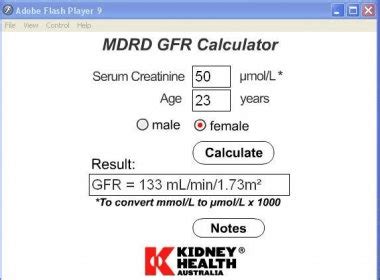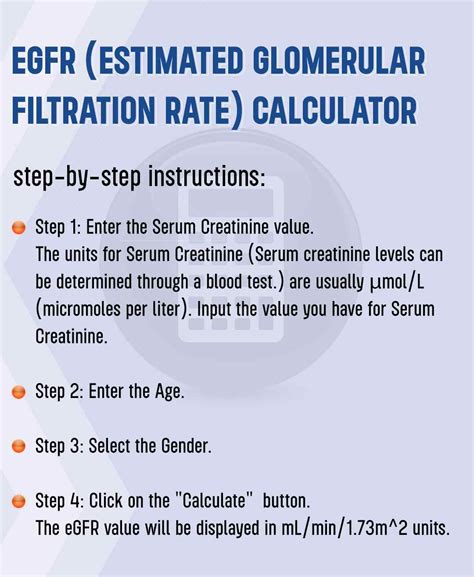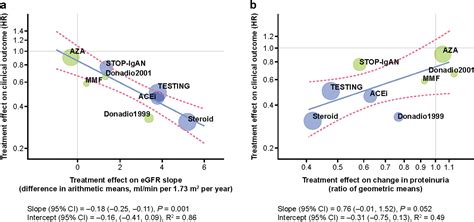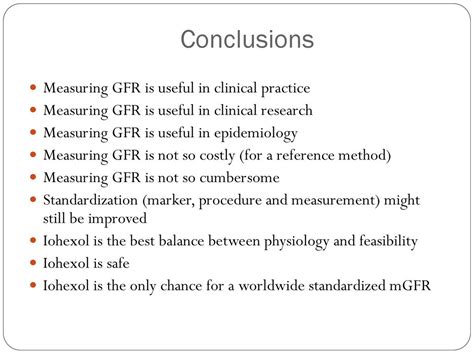Intro
Calculate GFR easily with our guide, covering eGFR, kidney function, and creatinine levels to assess renal health and diagnose kidney disease accurately.
Calculating the Glomerular Filtration Rate (GFR) is a crucial step in assessing kidney function. The GFR is a measure of how well the kidneys are filtering waste from the blood. A low GFR can indicate kidney disease or kidney failure. In this article, we will explore the importance of calculating GFR and provide a step-by-step guide on how to do it easily.
The GFR is an important indicator of kidney health, and it is used to diagnose and monitor kidney disease. The GFR is calculated based on several factors, including age, sex, race, and serum creatinine levels. Serum creatinine is a waste product that is filtered by the kidneys, and high levels can indicate kidney disease. The GFR is also used to determine the stage of kidney disease and to monitor the progression of the disease.
Calculating the GFR is a complex process that requires a thorough understanding of the underlying physiology and mathematics. However, with the advent of technology, it is now possible to calculate GFR easily using online calculators or mobile apps. These calculators use algorithms that take into account the various factors that affect GFR, including age, sex, race, and serum creatinine levels.
Introduction to GFR Calculation

The GFR calculation is based on the Modification of Diet in Renal Disease (MDRD) study, which developed an equation to estimate GFR. The MDRD equation uses the following variables: serum creatinine, age, sex, and race. The equation is as follows: GFR (mL/min/1.73m²) = 186 x (serum creatinine)^-1.154 x (age)^-0.203 x (0.742 if female) x (1.212 if African American). This equation is used to estimate the GFR in adults, and it is widely used in clinical practice.
Variables Affecting GFR Calculation
The GFR calculation is affected by several variables, including serum creatinine, age, sex, and race. Serum creatinine is the most important variable, as it reflects the kidney's ability to filter waste from the blood. Age is also an important variable, as kidney function declines with age. Sex and race are also taken into account, as they can affect kidney function.Step-by-Step Guide to Calculating GFR

Calculating GFR is a straightforward process that requires a few simple steps. Here is a step-by-step guide to calculating GFR:
- Step 1: Determine the serum creatinine level. This can be done by ordering a blood test.
- Step 2: Determine the age, sex, and race of the individual.
- Step 3: Use an online calculator or mobile app to calculate the GFR. These calculators use the MDRD equation to estimate the GFR.
- Step 4: Interpret the results. A GFR of 90 mL/min/1.73m² or higher is considered normal. A GFR below 60 mL/min/1.73m² indicates kidney disease.
Interpreting GFR Results
Interpreting GFR results is crucial in diagnosing and monitoring kidney disease. A GFR of 90 mL/min/1.73m² or higher is considered normal, while a GFR below 60 mL/min/1.73m² indicates kidney disease. The following are the different stages of kidney disease based on GFR: * Stage 1: GFR of 90 mL/min/1.73m² or higher (normal kidney function) * Stage 2: GFR of 60-89 mL/min/1.73m² (mild kidney disease) * Stage 3: GFR of 30-59 mL/min/1.73m² (moderate kidney disease) * Stage 4: GFR of 15-29 mL/min/1.73m² (severe kidney disease) * Stage 5: GFR below 15 mL/min/1.73m² (kidney failure)Benefits of Calculating GFR

Calculating GFR has several benefits, including:
- Early detection of kidney disease: Calculating GFR can help detect kidney disease early, when it is still possible to slow or reverse the progression of the disease.
- Monitoring kidney disease: GFR can be used to monitor the progression of kidney disease and adjust treatment accordingly.
- Determining the stage of kidney disease: GFR can be used to determine the stage of kidney disease, which is essential for developing an effective treatment plan.
- Reducing the risk of kidney failure: Calculating GFR can help reduce the risk of kidney failure by identifying individuals who are at risk and providing them with early treatment.
Common Mistakes in GFR Calculation
There are several common mistakes that can occur when calculating GFR, including: * Using an incorrect serum creatinine value * Failing to account for age, sex, and race * Using an outdated equation or calculator * Failing to interpret the results correctlyConclusion and Future Directions

In conclusion, calculating GFR is a crucial step in assessing kidney function and diagnosing kidney disease. The MDRD equation is widely used to estimate GFR, and online calculators and mobile apps have made it easy to calculate GFR. However, it is essential to use the correct equation and to interpret the results correctly. Future directions include developing new equations and calculators that can provide more accurate estimates of GFR.
Final Thoughts
Calculating GFR is an important step in maintaining kidney health. By understanding how to calculate GFR and interpreting the results correctly, individuals can take steps to reduce their risk of kidney disease and kidney failure. It is essential to work with a healthcare provider to develop an effective treatment plan and to monitor kidney function regularly.What is the normal range for GFR?
+A GFR of 90 mL/min/1.73m² or higher is considered normal.
How often should I calculate my GFR?
+It is recommended to calculate GFR at least once a year, or more often if you have kidney disease or are at risk of developing kidney disease.
Can I calculate my GFR at home?
+Yes, there are several online calculators and mobile apps that can be used to calculate GFR at home. However, it is essential to use a reliable calculator and to interpret the results correctly.
What are the risks of not calculating GFR?
+Not calculating GFR can increase the risk of kidney disease and kidney failure, as it can delay diagnosis and treatment.
How can I reduce my risk of kidney disease?
+To reduce your risk of kidney disease, it is essential to maintain a healthy lifestyle, including eating a balanced diet, exercising regularly, and managing any underlying health conditions.
We hope this article has provided you with a comprehensive guide to calculating GFR. If you have any further questions or concerns, please do not hesitate to comment below. Share this article with your friends and family to help them understand the importance of calculating GFR. Take the first step towards maintaining your kidney health by calculating your GFR today!
